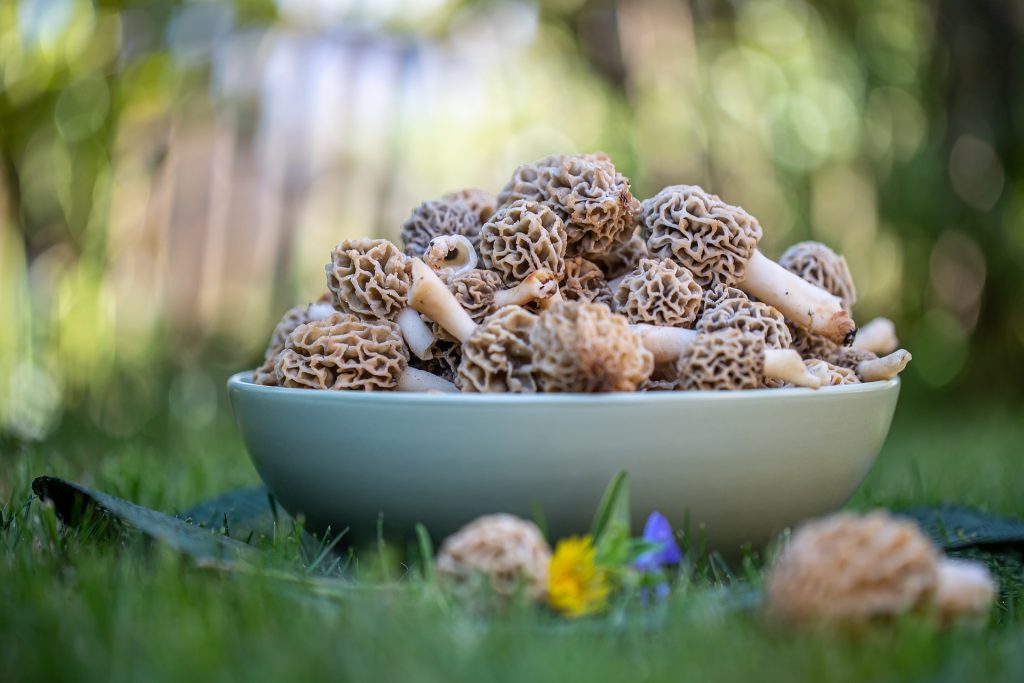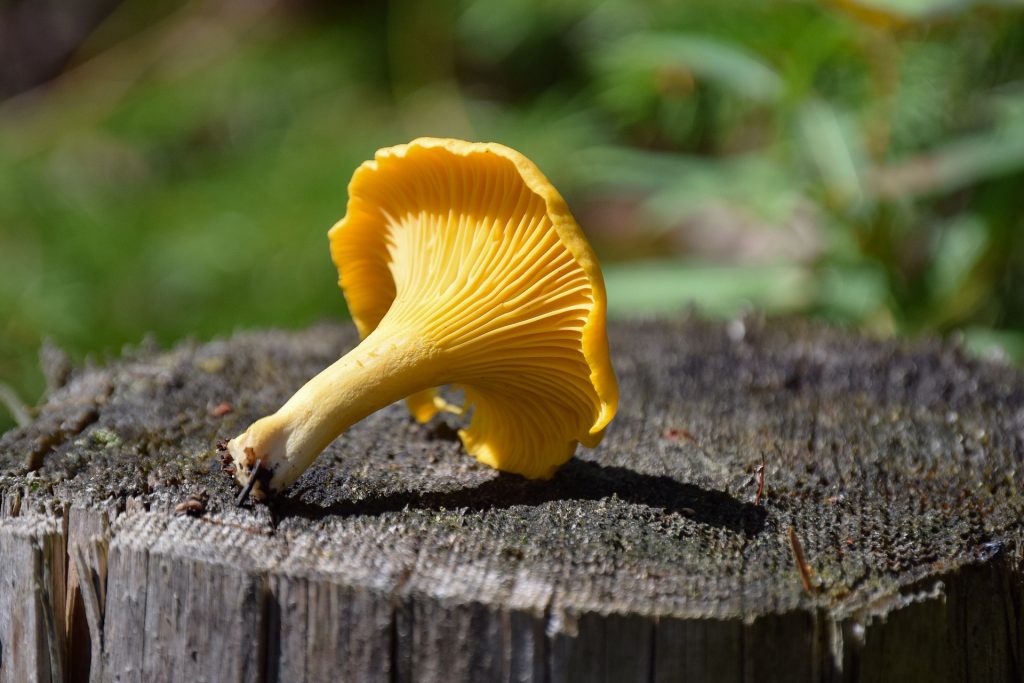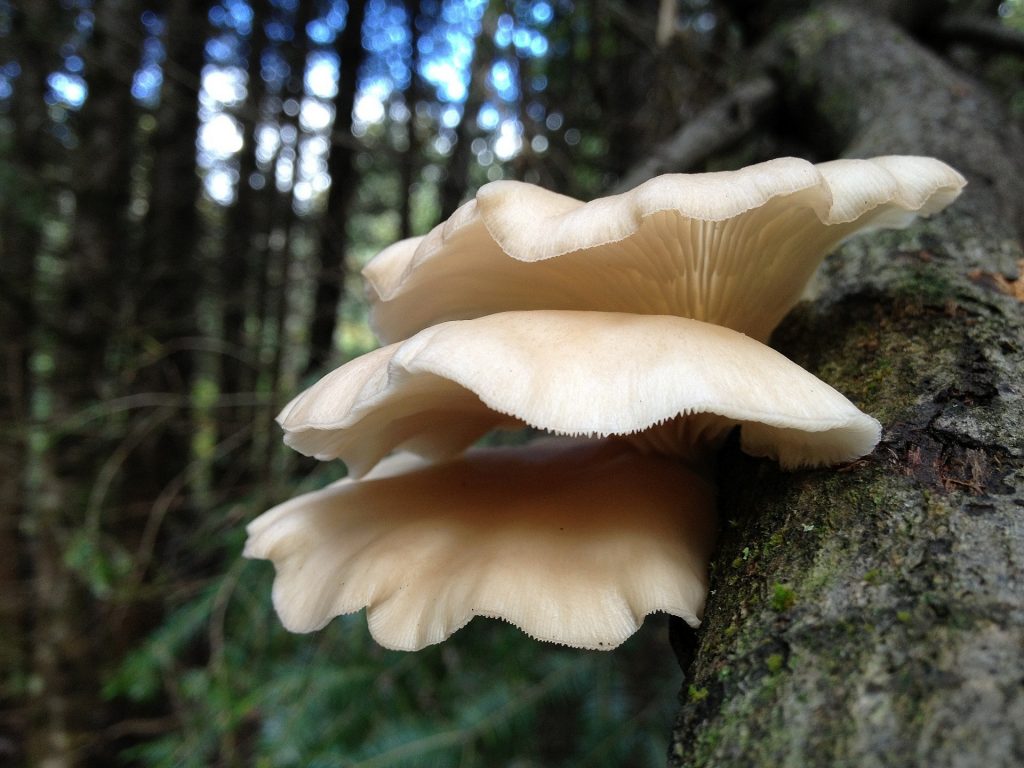Are you interested in foraging for edible mushrooms in Kansas? The state is home to a variety of mushrooms that are safe to eat, as well as some poisonous varieties that should be avoided. With a little knowledge and caution, you can enjoy the delicious flavors and nutritional benefits of wild mushrooms while exploring the great outdoors.
Some of the most common edible mushrooms found in Kansas include morels, oyster mushrooms, and puffballs. Morels are a prized delicacy, with a nutty, meaty flavor and a distinctive appearance. Oyster mushrooms are also popular, with a delicate, slightly sweet taste and a tender texture. Puffballs are another edible variety, with a mild, nutty flavor and a spongy texture. These mushrooms can be found in a variety of habitats, including forests, fields, and even lawns.
However, it’s important to be aware of the potential dangers of mushroom foraging. Kansas is also home to several poisonous mushroom species, including the green-spored parasol and the deadly galerina. Eating these mushrooms can cause serious illness or even death. It’s essential to properly identify any mushrooms you plan to eat, and to consult with an expert if you’re unsure about a particular species. With care and attention, you can safely enjoy the many delicious and nutritious mushrooms that grow wild in Kansas.
Understanding Edible Mushrooms
Defining Edible Mushrooms
Edible mushrooms are fungi that are safe for human consumption. They are rich in nutrients, low in calories, and can be a great addition to your diet. However, it is important to note that not all mushrooms are edible. Some mushrooms can be poisonous and even deadly if consumed. Therefore, it is crucial to be able to distinguish between edible and poisonous mushrooms.
Types of Edible Mushrooms
There are several types of edible mushrooms that can be found in Kansas. Some of the most common ones include:
- Morel Mushrooms: Morel mushrooms are one of the most popular edible mushrooms in Kansas. They have a distinctive honeycomb-like appearance and a nutty flavor that makes them a favorite among mushroom hunters.
- Oyster Mushrooms: Oyster mushrooms are another popular edible mushroom that can be found in Kansas. They have a delicate flavor and a soft texture that makes them a great addition to soups and stir-fries.
- Puffball Mushrooms: Puffball mushrooms are large, round mushrooms that can grow up to 20 centimeters in diameter. They have a spongy texture and a mild flavor that makes them a great addition to salads and pasta dishes.
- Chanterelle Mushrooms: Chanterelle mushrooms are prized for their delicate flavor and meaty texture. They have a trumpet-like shape and a bright orange color that makes them easy to spot in the wild.
It is important to note that while these mushrooms are generally safe to eat, it is still important to properly identify them before consuming. If you are unsure about the identification of a mushroom, it is best to err on the side of caution and not consume it.
In conclusion, edible mushrooms can be a great addition to your diet, but it is important to be able to distinguish between edible and poisonous mushrooms. By familiarizing yourself with the different types of edible mushrooms and properly identifying them, you can safely enjoy the many benefits that mushrooms have to offer.
Edible Mushrooms in Kansas
If you’re interested in foraging for edible mushrooms in Kansas, you’re in luck! Kansas is home to a variety of edible mushrooms that are not only delicious but also nutritious. Here are some of the most popular edible mushrooms you can find in Kansas:
Morels in Kansas
Morels are a popular edible mushroom in Kansas. They have a distinctive honeycomb-like cap and a hollow stem. They are usually found in wooded areas and are most commonly found in the spring. Morels are considered a delicacy and are often used in gourmet cooking.

Chanterelles in Kansas
Chanterelles are another popular edible mushroom in Kansas. They have a trumpet-like shape and a bright yellow color. They are usually found in wooded areas near mature trees and are most commonly found in the summer and fall. Chanterelles have a fruity aroma and a delicate flavor that pairs well with many dishes.

Oysters in Kansas
Oyster mushrooms are one of the most common edible mushrooms in Kansas. They have a fan-like shape and a soft, velvety texture. They are usually found growing on dead or dying trees and are most commonly found in the summer and fall. Oyster mushrooms have a mild, nutty flavor and are often used in soups and stir-fries.

Black Trumpet in Kansas
Black trumpet mushrooms are a lesser-known edible mushroom in Kansas. They have a funnel-like shape and a dark brown to black color. They are usually found in wooded areas and are most commonly found in the summer and fall. Black trumpet mushrooms have a rich, earthy flavor and are often used in sauces and gravies.
Maitake in Kansas
Maitake mushrooms, also known as hen of the woods, are a popular edible mushroom in Kansas. They have a frilly, fan-like shape and are usually found growing at the base of oak trees. They are most commonly found in the fall. Maitake mushrooms have a meaty texture and a rich, earthy flavor that pairs well with many dishes.
Remember to always be cautious when foraging for mushrooms. Only eat mushrooms that you are 100% certain are safe to eat. If you are unsure, consult an expert or do not eat it. Happy hunting!
Foraging for Mushrooms in Kansas
If you’re interested in foraging for mushrooms in Kansas, there are a few things you should know before you start. First, it’s important to know the types of edible mushrooms that grow in Kansas and how to identify them. Morel mushrooms are the most popular species to hunt for in Kansas, but there are also other edible mushrooms such as chanterelles, chicken of the woods, and oyster mushrooms.
When foraging for mushrooms, it’s best to go to wooded areas, creek beds, and other areas where wild plants grow. Dead and dying trees are also a good place to look for mushrooms, as they provide the perfect environment for them to grow. Look for uniform bright yellow or gold color, wavy tops, overlapping growth, and pale or dark brown caps with white undersides.
It’s important to be cautious when foraging for mushrooms, as some species can be poisonous. Make sure you have a good field guide or are accompanied by an experienced forager who can help you identify the mushrooms you find. If you’re not sure about a particular mushroom, it’s best to err on the side of caution and not eat it.
When you find a mushroom that you believe is edible, make sure to pick it carefully. Use a knife to cut the stem close to the ground, being careful not to damage the mushroom or the surrounding area. It’s also a good idea to carry a basket or bag to transport your mushrooms, as they can be easily damaged in a pocket or backpack.
Finally, be aware that some edible mushrooms have a strong smell. For example, morels have a distinctive earthy aroma that can be quite strong. If you’re not a fan of strong-smelling mushrooms, it’s best to avoid these species.
Overall, foraging for mushrooms in Kansas can be a fun and rewarding activity, but it’s important to do it safely and responsibly. With a little knowledge and caution, you can enjoy the delicious flavors of wild mushrooms while exploring the beauty of Kansas’ natural areas.
Identifying Edible Mushrooms
If you’re interested in foraging for edible mushrooms in Kansas, it’s important to know how to properly identify them. While there are many edible mushrooms that grow in Kansas, there are also many poisonous lookalikes that can cause serious harm if consumed.
One of the best ways to identify edible mushrooms is to use a field guide or authoritative identification guide. The University Press of Kansas has published several books on the subject that can be helpful. These guides will provide detailed descriptions and photographs of each mushroom, as well as information on their habitat and seasonality.
When identifying mushrooms, it’s important to pay attention to their gills. Edible mushrooms will typically have white or light-colored gills, while poisonous mushrooms may have dark or discolored gills. Additionally, edible mushrooms will have a pleasant smell, while poisonous mushrooms may have a foul odor.
It’s also important to note that some edible mushrooms have poisonous lookalikes. For example, the edible morel mushroom has a poisonous lookalike called the false morel. The false morel can cause severe gastrointestinal distress and even death if consumed. Make sure to properly identify any mushroom before consuming it.
When foraging for mushrooms, it’s best to stick to forests and wooded areas. Mushrooms growing on the ground are more likely to be edible than those growing on trees or other plants. Additionally, it’s important to only collect mushrooms that are in good condition and have not been contaminated by pesticides or other chemicals.
Overall, identifying edible mushrooms can be a fun and rewarding experience, but it’s important to do so safely and responsibly. Always use a field guide or authoritative identification guide, pay attention to gills and odor, and be aware of poisonous lookalikes.
Mushroom Foraging Safety
Mushroom foraging can be a fun and rewarding experience, but it is important to prioritize safety when picking wild mushrooms in Kansas. Here are some tips to help you stay safe while foraging:
Toxic Mushrooms
First and foremost, it is crucial to be able to identify toxic mushrooms. Eating a poisonous mushroom can cause serious illness or even death. The Kansas Department of Agriculture requires that mushrooms picked in the wild for sale must be individually inspected for safety by an approved mushroom identifier. However, if you are foraging for personal consumption, it is still important to be able to identify toxic mushrooms.
Some poisonous mushrooms in Kansas include the Green Spored Parasol, which can cause severe gastrointestinal distress like vomiting and diarrhea, and the Destroying Angel, which can cause liver and kidney failure. Make sure to consult an authoritative identification guide before consuming any wild mushrooms.
Proper Tools
When foraging for mushrooms, make sure to bring the proper tools. A quality knife is essential for cutting mushrooms, and a basket or bag is useful for carrying your haul. Avoid using plastic bags, as they can cause mushrooms to sweat and spoil. A mesh bag is a good option, as it allows air to circulate and helps keep mushrooms fresh.
Leave No Trace
When foraging for mushrooms, it is important to practice Leave No Trace principles. This means leaving the environment as you found it and not damaging any plants or wildlife. Avoid trampling on vegetation, and be careful not to disturb any wildlife habitats. Additionally, avoid picking more mushrooms than you need, as this can deplete the local mushroom population.
Conclusion
By following these safety tips, you can enjoy a safe and successful mushroom foraging experience in Kansas. Remember to always consult an authoritative identification guide before consuming any wild mushrooms, and to practice Leave No Trace principles to help preserve the natural environment.
Cooking with Edible Mushrooms
If you’re new to cooking with edible mushrooms, fear not! They are incredibly versatile and can be used in a variety of dishes. Here are some cooking recommendations to get you started:
- Saute mushrooms in olive oil and garlic for a simple and flavorful side dish. Add a pinch of salt and pepper to taste.
- Add sliced mushrooms to scrambled eggs for a protein-packed breakfast. Top with chives for an extra burst of flavor.
- Toss chopped mushrooms into green salads for an earthy crunch. They pair particularly well with sautéed green beans and anise.
- Grill mushrooms alongside chicken or steak for a hearty and flavorful main dish.
If you have excess mushrooms that you can’t use right away, don’t worry! There are a few ways to preserve them for later use:
- Freeze mushrooms by cleaning and slicing them, then spreading them out on a baking sheet. Once frozen, transfer them to a freezer-safe container.
- Dry mushrooms in the oven by slicing them thinly and placing them on a baking sheet. Bake at a low temperature (around 150°F) until they are completely dry and crispy.
When cooking with mushrooms, it’s important to note that they can absorb excess oil. To avoid this, try using a non-stick pan or adding just a small amount of butter or oil to the pan. For added flavor, try adding fresh rosemary or anise to your mushrooms while cooking.
Kansas Mushroom Organizations
If you’re interested in learning more about edible mushrooms in Kansas, there are several organizations that can help you get started. Here are a few of the most notable:
Kaw Valley Mycological Society
The Kaw Valley Mycological Society is a group of mushroom enthusiasts based in Lawrence, Kansas. They offer a variety of events throughout the year, including forays, workshops, and dinners. These events are a great way to learn more about the mushrooms that grow in Kansas, as well as to meet other people who share your interest in mycology.
To join the Kaw Valley Mycological Society, you can visit their website and fill out their membership application. Membership costs $20 per year, and includes access to all of the society’s events and resources.
Missouri Mycological Society
While not based in Kansas, the Missouri Mycological Society is a great resource for anyone interested in mushrooms in the Midwest. They offer a variety of events throughout the year, including forays, workshops, and lectures. They also have an extensive library of mushroom-related books and other resources.
To join the Missouri Mycological Society, you can visit their website and fill out their membership application. Membership costs $20 per year, and includes access to all of the society’s events and resources.
Other Resources
In addition to these organizations, there are many other resources available for mushroom enthusiasts in Kansas. For example, you can find a variety of books and field guides on mushroom identification and foraging at your local library or bookstore. You can also find a wealth of information online, including forums, blogs, and websites dedicated to mycology.
No matter what your level of experience or interest in mushrooms, there are plenty of resources available to help you learn more about this fascinating subject. So why not join a mushroom society or attend a foray, and start exploring the world of edible mushrooms in Kansas today?
Frequently Asked Questions
What mushrooms are edible in Kansas?
Kansas is home to several edible mushrooms, including the popular Morel mushroom, which is highly prized for its rich, nutty flavor. Other edible mushrooms found in Kansas include the Chanterelle, which has a fruity aroma and a delicate flavor, and the Hen of the Woods, which has a meaty texture and a slightly nutty flavor.
Are there any poisonous mushrooms in Kansas?
Yes, there are several poisonous mushrooms in Kansas, including the Vomiter, also known as the Green Spored Parasol, which can cause severe gastrointestinal distress. It’s important to be able to identify poisonous mushrooms and avoid consuming them.
How do you identify mushrooms in Kansas?
Identifying mushrooms in Kansas can be challenging, as there are many different species that grow in the state. To identify mushrooms, you should look at their physical characteristics, such as their cap shape, color, and texture, as well as their gills, stem, and spore print. Consulting a field guide or mushroom identification app can also be helpful.
How can I tell if a mushroom is edible?
It’s important to be able to positively identify a mushroom as edible before consuming it. Look for physical characteristics that match those of known edible mushrooms, and avoid mushrooms that have characteristics of poisonous species. When in doubt, it’s best to err on the side of caution and not consume a mushroom unless you are absolutely certain it is safe to eat.
What is the Kansas mushroom guide?
The Kansas mushroom guide is a resource that can help you identify mushrooms that grow in the state. It includes information on the physical characteristics of different species, as well as their edibility and toxicity. You can find the guide online or in print at many bookstores and outdoor supply stores.
What are the foraging laws in Kansas?
In Kansas, foraging for mushrooms is generally allowed on public land, but it’s important to be aware of any regulations or restrictions that may apply. For example, some parks and nature reserves may have specific rules about foraging. Additionally, it’s important to obtain permission from private landowners before foraging on their property.
